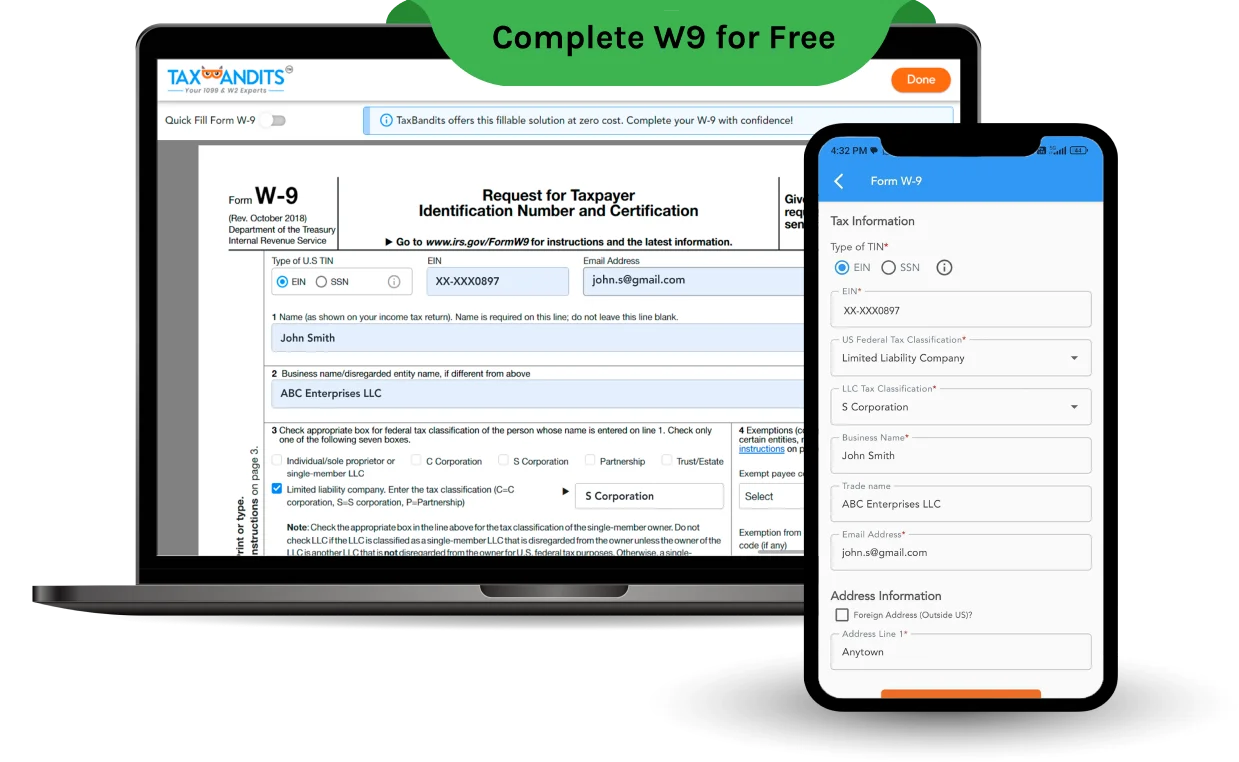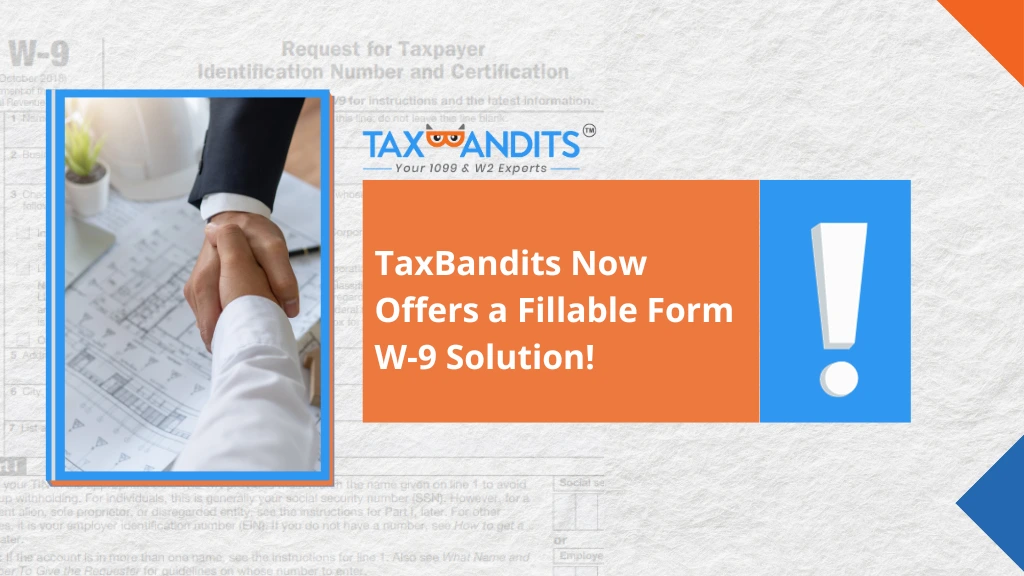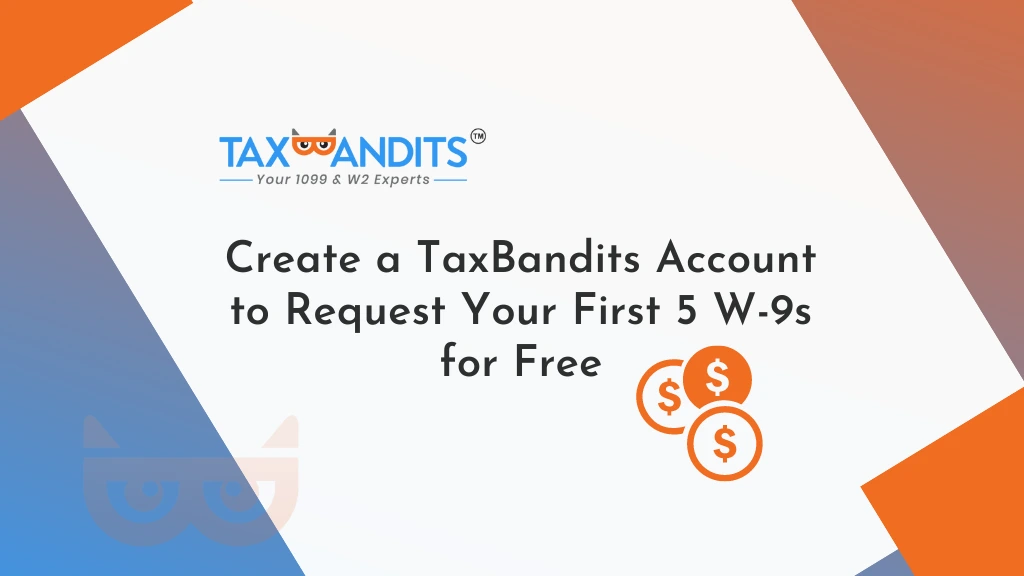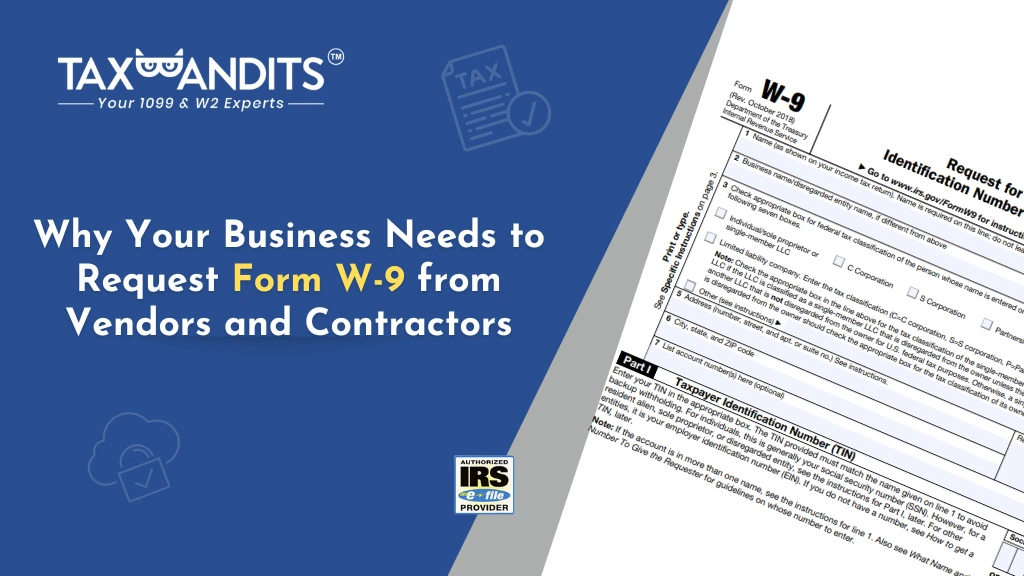Why choose TaxBandits to fill out form W-9?
An easy-to-use solution that is free and secure
Quick Fill Form W-9
Effortlessly complete your Form W-9 with our fast and intuitive tool. Save time by filling out all required fields in just a few clicks.
E-Sign option
Sign your Form W-9 digitally, no need for printing or scanning. Our secure e-signature feature ensures compliance with IRS regulations.
User-Friendly with Zero cost
Our user-friendly software makes it simple to fill out your Form W-9 and share it with your vendors. The best part? It's completely free with no hidden charges.
No Trial Period. No Credit Card Required.
How to fill out form W-9
What Information Is Required on a Fillable W-9 Form?
Discover the key information needed to fill out your Form W-9
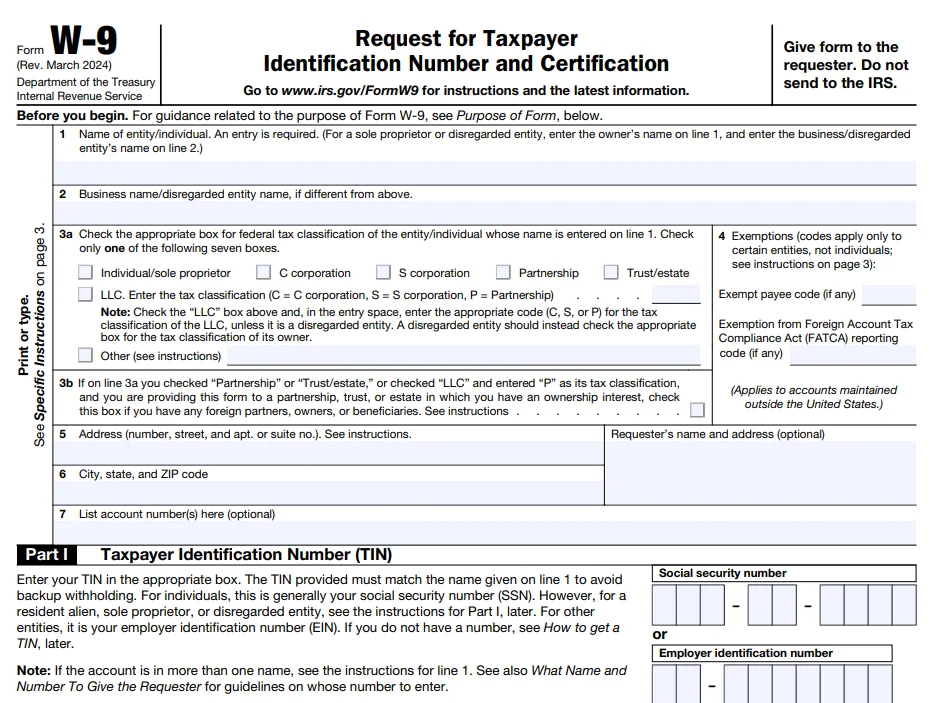
Personal Information
Full Name, Business Name (if applicable)
Federal Tax Classification
- Individual/Sole Proprietor
- S Corporation
- C Corporation
- Trust/Estate
- LLC with its classification as C Corporation, S Corporation, Partnership
Exemptions
Exempt from backup withholding or FATCA reporting, enter the applicable codes
Address Details
Street Address, City, State, and ZIP Code
Taxpayer Identification Number (TIN)
Social Security Number (SSN) or Employer Identification Number (EIN)
Certification
Signature of a U.S. person, Date

How to Complete Your Fillable Form W-9 in 3 Easy Steps?
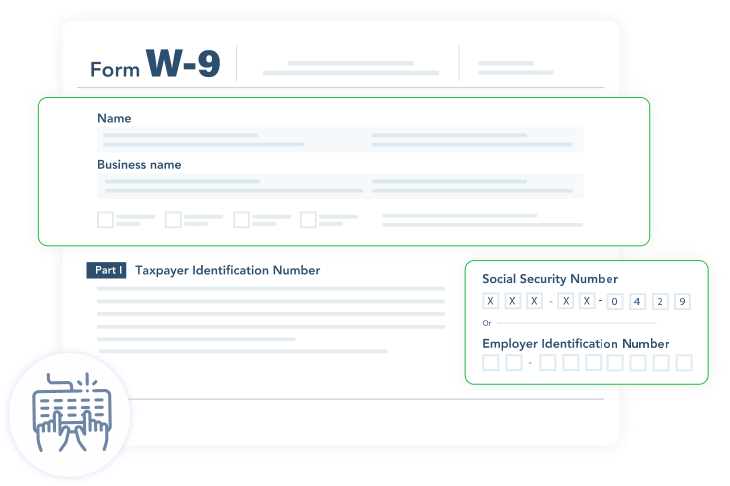
1. Enter Form W-9 Details
- Fill in your name, business name, address, street, city, state, and ZIP code
- Enter your tax identification number (TIN), either your Social Security Number (SSN) or your Employer Identification Number (EIN)
- Select Federal Tax Classification (e.g., Individual/Sole Proprietor, Corporation, LLC)
- Complete other sections of Form W-9
2. E-sign Fillable Form W-9
- Review your completed Form W-9
- Once verified, proceed to sign your Form W-9 electronically
- E-signing your form provides a secure way to validate your information
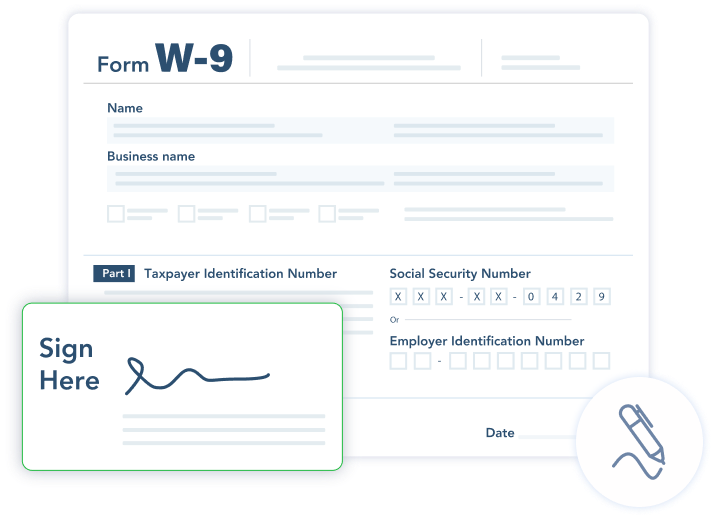
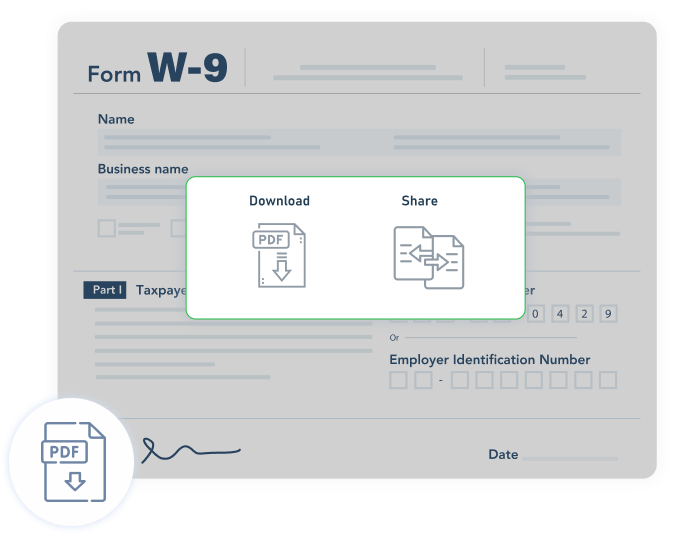
3. Download and Print / Share Fillable Form W-9
- Share the W-9 Form directly with payers via email
- Download the printable Form W-9 as a PDF and deliver a copy to them
How to fill out form W-9
Streamline Your 1099 Filing by Requesting Form W-9 From Your Vendors
Request and Manage W9/W8 BEN Online
If you are a payer, you can use our W-9 Manager to request, collect, and securely manage the W-9/W-8 forms from your contractors in a single location.
Automate W-9 With TaxBandits API Integration
Integrating our developer-friendly API with your software or portal enables W-9 automation and streamlines 1099 filings.
Frequently Asked Questions about Fillable Form W-9
What is Form W-9?
Form W-9 is an IRS form that you can use to provide your TIN information to your payers. This information will be used by your payers to file 1099 forms for reporting the payments made to you with the IRS. The payments may include:
- Income paid to you.
- Real estate transactions.
- Mortgage interest you paid.
- Acquisition or abandonment of secured property.
- Cancellation of debt.
- Contributions you made to an IRA.
What are the new updates in the Form W9 for 2024?
In November 2023, the IRS released the draft version of Form W-9, introducing a new Line 3b, and the IRS released the latest version of Form W9 in March 2024. The original Line 3 has now been split into separate sections as Line 3a and 3b, respectively.
- Line 3a requires business entities to indicate their federal tax classification, such as Individual/sole proprietor, C corporation, S Corporation, Partnership, Trust/Estate, LLC. If a business/individual is classified as an LLC, it should mention whether it is a C Corporation, S Corporation, or Partnership.
- In contrast Line 3b should be checked if you indicated “Partnership” or “Trust/estate” on line 3a or if you selected “LLC” with “P” as its tax classification, and you are providing this form to a partnership, trust, or estate in which you have an ownership interest. Also, check this box to see if there are any foreign partners, owners, or beneficiaries.
Who needs to fill out a W9?
Printable Form W-9 is primarily completed by Independent contractors, gig workers, freelancers, consultants, and other individuals or entities that receive business-related payments.
What happens if I don’t provide W-9?
Failing to furnish W-9 Form will have the following consequences:
- Your payments will be subjected to a backup withholding of 24%
- A penalty of $50 may also be imposed for failure to furnish the correct TIN
What is the difference between a W-9 and a 1099?
A fillable W-9 is not a tax return and is not filed with the IRS. It is a form used by the payees to provide their TIN information to the payers for accurate 1099 filing. On the other hand, 1099 is a tax return that the payers file with the IRS to report their payments to the respective payees.
Will the W-9 be filed with the IRS?
No! W-9 is not a tax form that needs to be filed with the IRS. It’s just an IRS document you use to provide your TIN and other sensitive information to your payers.
When will my W-9 Expire?
There is no specific expiration date for a Form W-9. However, if the information you provided on the W-9 has changed (for example, your address or business name), you must submit a new W-9 with the updated information.
I’m a Canadian. Do I need to provide a W-9?
No! Form W-9 applies only to U.S. residents. Non-U.S residents can use Form W-8BEN or W-8BEN-E to furnish their TINs to the businesses (payers)
that request them.
Am I eligible to fill out a W-9 as an individual?
Yes! Form W9 creator can be filled out as an individual to provide your TIN to your payers/requesters, even if you don’t have a registered business.
Do I need to complete and provide a W-9 every year?
It is not necessary to complete and provide a W-9 Form every year. However, if there are any changes in your information (for example, your address or business name), then you need to update the W-9 details you provided previously to your payers with a new W-9 Form.
When am I exempt from completing the W-9?
As a contractor or vendor, you are exempt from completing the W-9 form in the following situations:
-
Not a U.S. person: If you are a foreign individual or entity, you can provide a W-8 form instead of a W-9. This means you don’t have to fill out
the W-9 at all. - Payments not reportable: If the payments you receive are not subject to IRS reporting requirements, the requester may not need a W-9 from you.
- You are an employee: If the employer employs you, you are not required to complete and provide a W-9 to them. Instead, you would typically complete a Form W-4 for withholding purposes.


